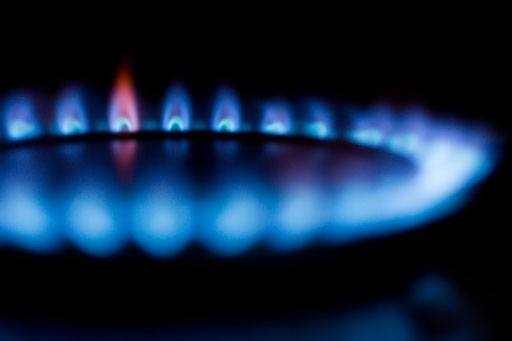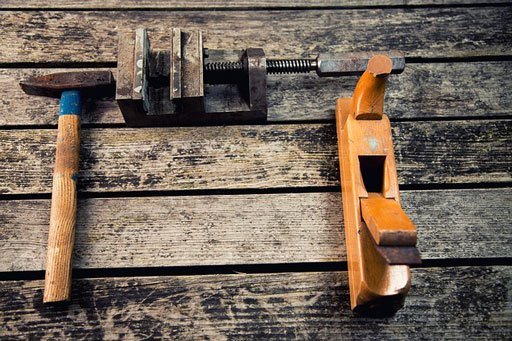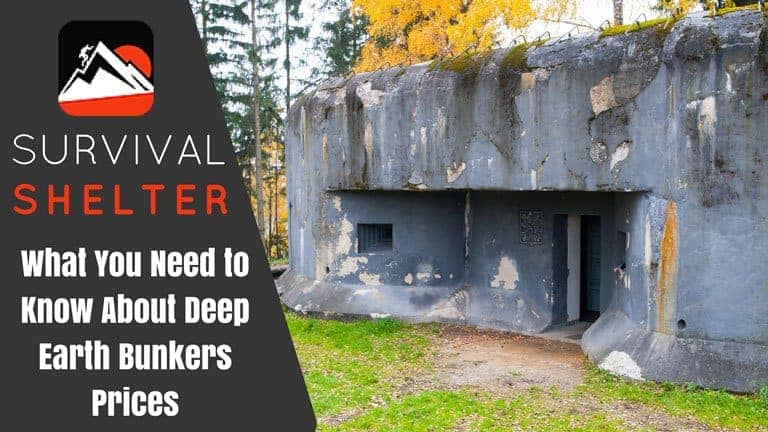Contents
As a prepper, being able to gain access to news and other important information still involves the use of computers and electricity.
On the other hand, becoming free of commercial electricity is a chore that cannot be fully achieved by building or buying power generation systems. Instead, you will need to look for alternative ways to meet basic living needs without electricity.
Surprisingly enough, many of the methods you can use right now cost less than using electricity, are just as convenient and will help you meet important goals now as well as in the post-crisis world.
We hope that these tips give you useful ideas to survive without electricity or even motivate you to start your transition to go completely off the grid.
Cooling

If you monitor electricity usage, you will find that a significant portion of your bill goes for air conditioning, fans, and other home cooling devices.
Surprisingly enough, this is also one of the easiest places to cut your electric bill by around 30% and be all ready for a major crisis scenario at the same time. Here are five things you can do today that will help your home stay cool without using electricity, or using much less.
Use heavy white drapes with tin foil (shiny side out) to block out the sun during daylight hours. Be sure to close the drapes before dawn, and then open them again about an hour after sunset.
It is also important to make sure the drapes block off air from around the sides of the window. Leaky windows and surrounding frames cost more than you realize when it comes to maintaining a comfortable home temperature.
- Close off rooms you aren’t using. This includes making sure that central air vents are closed off. Seal off with tape and tin foil to make sure no air leaks through.
- Make a buckwheat hull body pillow. Buckwheat hulls include more airspace than a conventional pillow and mattress stuffing. When combined with cotton sheets, this pillow will hold in less heat from your body while you are sleeping. You can also make a pillow large enough to cover the whole bed.
- Use box fans at night blowing inward to pull cooler air into rooms. For added cooling, put a stand in front of the fan with wet fabric. As the water evaporates, it will also reduce the temperature in the room.
- Caulk all doors to seal up any leaks that allow cool air to escape.
- Build a solar powered “air conditioner”
- Use smaller fans on your desk or other areas where you tend to stay for longer periods of time. In many cases, these smaller fans are battery powered. You can use rechargeable batteries and a solar-powered recharger to eliminate the need for commercial electricity.
Heating
Unless you are using electric heaters and baseboards, you may not realize just how much of your electric bill goes for heating your home.
Nevertheless, operating oil and gas furnaces, fans, and other system parts requires electricity. Here are some ways you can reduce this part of your electric usage:
- Build and use candle heaters for small rooms, or parts of a room. For example, if you have a small home office, and usually sit at your desk, then you can put a candle heater a few feet away and have plenty of heat in the area where you are working. Be sure to block off the central heat vent in this room and seal it with duct tape and tin foil so that no heat escapes into the room. This will reduce the amount of time the fan and other electrical parts in the heating system must run. Needless to say, if you are using an electric heater in the room, you can close that too.
- Build a solar tin can heater. These nifty heaters are perfect for small and midsized rooms. You can also add copper or hot water PVC pipe to the insides of the cans and then pipe hot water through your home with a solar powered mini water pump. Just remember this system would feed into your central air. Even though you would have to install water radiators, they are well worth the effort. Aside from saving money on electricity, you can also look forward to cleaner air; especially if the air handler in your home is full of dust and germs.
- If you are also interested in using food scraps and growing your own food, a compost pile can also be used to generate heat. Just add some hot water PVC pipe under the compost pile and let the hot water in the pipe circulate through your home.
- Open drapes during the day to let in as much sunlight as possible.
- Block off all windows and window frames with heavy duty clear plastic vinyl. No matter how new or “efficient” your windows are, they may be letting as much as 30% of the heat in your home out. Even a small draft in each window can add up to a lot of lost heat.
- Don’t forget to caulk off all doors and door frames. If the day is especially cold or windy, use newspapers in the door to block any air that gets through the openings.
- Always block off rooms you aren’t using, and be sure to close off and block all heating vents going to that room. You can also add heavy drapes or tape the door over with plastic so that warm air from surrounding room doesn’t escape into the unused ones.
- Wear layers of clothing while indoors to preserve body heat.
- Use flannel sheets to increase heat retention.
- Keep ceiling fans moving clockwise and on a low setting to push warm air back down towards the living area.
Cooking

When it comes right down to it, you shouldn’t even have a portion of your electric bill dedicated to cooking.
There are hundreds of ways to cook without using electricity, and quite a few that don’t even require any fuel other than the sun. Here are a few inexpensive things you can build for yourself or buy pre-manufactured:
- heat up a cup of water with a solar powered coffee mug or thermos. These devices use solar panels to power a small heater. You can also take advantage of strong sunlight and a black glass container to do the same job.
- Build a solar oven or solar cooker. From cardboard boxes to automobile headlights, solar cookers and ovens are used worldwide for delivering hot meals that are safe to eat.
- Thermos cooking – you can reduce the amount of fuel you use for a propane stove or campfire by allowing certain kinds of foods to finish cooking in a thermos. Oats, beans, and canned foods can usually be cooked safely using this method.
- Park your car in the sun during summer months or warm days – if you don’t want to build a solar oven, just park your car in the sun and put the foods to be cooked in a black cooking vessel on the dashboard. You can do just about anything from fry eggs to dehydrate foods using this method. For added heat buildup, paint your car dull black so that it absorbs and retains more heat.
- Put foods in tinfoil and cook them while your automobile engine is running. Don’t forget to remove the foods before they burn.
- Build a rubbing alcohol stove.
- If you put a ceramic plate on top of a candle heater, you can use it to warm foods up while it is supplying heat for the room. I have found that using a votive candle works better than tea lights for this and other heating purposes. Just make sure that the clay pots are raised high enough to allow proper ventilation for the candle.
Refrigeration and Freezing
Depending on how you prepare your foods, it may be possible to reduce or end your reliance on electricity for freezing and refrigerating foods.
To get started, however, aim for a 50 – 80% reduction in the amount that you currently spend on your electric bill for this purpose. Here are some things you can try that will save you a good bit of money and also cut back on your food bill:
- buy an apartment sized, energy efficient refrigerator. If you currently use a larger refrigerator, chances are you are filling it up with foods that wind up getting thrown out anyway. A smaller refrigerator can take 1/3 to ½ less electricity than the unit you are using right now. In addition, you will also save money on food because you will prepare smaller portions or avoid buying things that you don’t eat.
- Build and use clay flowerpot zeer pots for keeping fruits and vegetables cool. In many cases, the setting on your refrigerator is actually too high for many fresh foods, which causes them to shrivel up and rot faster. A zeer pot has a lower temperature than your refrigerator and requires no electricity.
- If you buy fresh foods or meat, be sure to dehydrate them so that they can be stored for longer intervals without a refrigerator. You can build a solar dehydrator from scraps around the yard, or use your car and some drying racks on a hot day.
- Smoke fish and meat for longer storage times.
- Cook soups and other foods in bulk, then dehydrate them so they can be stored away without refrigeration. Remember to store them away in single serving packets so that you do not wind up putting leftovers in the refrigerator.
- If you must freeze meat or other foods, use an insulated bucket of ice with salt in it. The food will freeze and stay frozen for several days using this method.
- Build and underground ice house and earth refrigerator.
- On clear nights with a full or near full moon, you can use your solar cooker to draw heat away from the cooking area instead of drawing it in.
Building and Construction

Many people fear building a homestead because they think it will take all kinds of complicated power tools.
To quote Henry David Thoreau in his book, Walden Pond “Men have become the tools of their tools”. As you will recall, in this particular book, the main character set off with little more than a borrowed ax and a few other hand tools.
While there is some controversy over whether he used more tools than described in the book, even an expanded list does not include power tools.
From building log cabins to complex cathedrals, you can look back in history and find many examples of places where no electricity was used to build and construct homes and business places.
That being said, if you don’t want to rely only on muscle power, here are some devices that might be of interest:
- Waterwheels used to saws and milling machines.
- You can also use waterwheels to power trip hammers.
- Use pulleys and ropes to lift wood, assembled blocks, and other materials that need to be installed in upper floors of a building.
- Use hand drills and ratcheting screwdrivers instead of power drills and screwdrivers.
- Horses, donkeys, and mules can also be used to turn axles that connect to saws that will cut through wood and other materials.
- Instead of using wood or other materials that require more work to assemble, use plastic bottles filled with sand. To create a bullet proof, water proof, durable shelter, use concrete or even mud between the bottles to build walls and other structures.
- Build a dugout or other underground shelter that requires less complicated assembly and materials.
Lighting
Even though you may be accustomed to simply flipping a light switch, there are many ways to light your home without using commercial electricity.
These methods will give you plenty of light, and also ensure that you aren’t scrambling for alternatives in a time when the power grid goes down.
- Use LED bulbs. Many of these bulbs provide 60 to 100 watts of light while using well under 7 watts of electricity. There are also plenty of battery powered LED flashlights that produce enough light for a small room. Just use a solar powered battery charger, and these LEDs and batteries will last for years on end.
- If you are concerned about an EMP ruining LED light bulbs, then use clear bottles with bleach and water to make rooftop “light bulbs”.
Historically speaking, humans built all 7 Ancient Wonders of the World without electricity. We have also survived for millions of years without refrigerators, light bulbs, central heating, and air conditioners.
I would love to hear about some innovative ways you have cut back on electricity usage and increased your chance of surviving in a post-crisis world using these methods. Please feel free to comment in the message box below!





Too hard to read because of the stupid FB, Google, Twitter Pinterest boxes that are right over what you are reading. Would I want to share something I am having difficulty reading? Probably not.I am done reading sites that do this.
I’m sorry to hear that you couldn’t read the article. I didn’t know that the share plugin we are using for the site is causing a lot of issues. We turned off the image share buttons, were you reading on a smartphone, PC or tablet? I would greatly appreciate if you let us know to eliminate the problem. I really hope to have you back when we publish another article. Thanks for your help.
We have an indoor-safe UL Approved Kerosene Heater in our home. It works without electricity. We also have solar Charged L.E.D. lighting. So we have heat & light totally OFF GRID, and have been doing this for YEARS!
This is the precise weblog for anybody who needs to seek out out about this topic. You notice so much its almost arduous to argue with you. You positively put a brand new spin on a subject that’s been written about for years. Nice stuff, simply nice!
Hi, Really great effort. Everyone must read this article. Thanks for sharing.
We’re a gaggle of volunteers and opening a brand new scheme in our community.
Your website offered us with valuable info to work
on. You’ve done a formidable task and our whole neighborhood can be grateful to you.
I so believe we can survive without today’s lifestyle, we are just lazy